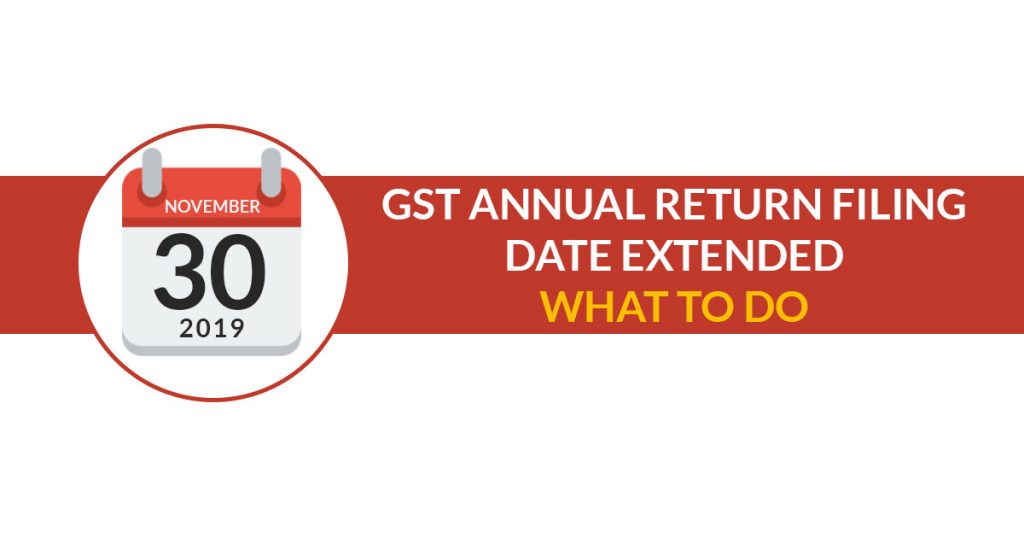
The due date for filing of Annual return (GSTR-9) and reconciliation statement/ audit report (GSTR-9C) has extended by the government till November 30, 2019. The taxpayers should utilize this period of three months for addressing their concerns and ensure the filing of returns on time.
Since the original deadline of December 2018, the government has extended the deadline for the fourth time in a row. And the reason behind is the technical glitches being faced by the taxpayers while filing for the said returns.
Mr. Priyajit Ghosh, Partner, Indirect tax, PwC India, believes that the extension in the due date of GSTR-9 filling for 2017-18 is likely to facilitate taxpayers in several ways. “First, several technical issues are being faced by the taxpayers such as the JSON files (the data is converted into this file format and uploaded to GSTN for electronic filing) are rejected upon upload to GSTN without indication of error, digital signature related problem. While GSTN has addressed the issues on time to time basis, the extension will help both GSTN and the taxpayers,” says Ghosh.
He further added that when the taxpayers prepared for filing the returns and reconciliation statement for the first time, it unfolds several issues. Out of which, the government has resolved some of the issues as early as in July 2019. “As the taxpayers are attempting to complete the return and statement, they are encountering various practical and interpretation related challenges. The extended timeline will help the taxpayers seek further clarifications on many aspects. The Government may choose to simplify and clarify various aspects of the filing,” says Ghosh.
Following the above-mentioned reason, the recent statistic showcases only a total of 15% of taxpayers remained able to file GST annual return and less than 1% have filed the audit report (GSTR-9C). Further, a sufficient percentage of NIL return out of the 15% dealers who have filled the return could also be reported. Also, in the situation when the government was providing recurring clarification, it was expected that the auditors, consultants and taxpayers need of additional time so that they can conclude correct reporting in GSTR-9 & GSTR-9C.
“The decision has been welcomed by the industry as it has provided much respite to the industry, which has been persistently struggling with filing an annual return and audit report. The taxpayers have been facing difficulties due to lack of clarification from the Government and technical glitches on the portal,” says Harpreet Singh, Partner, KPMG India.
The third reason for extending the due date for GSTR-9 Annual return that the several parts of the country have witnessed natural calamities and if the 31st August declared as deadline, it coincides with the last date for the filing of ITR as well. November 31, 2019, is the new deadline which will past the festival seasons, give enough time to the government to make the portal compliant for filing.
What to Do in Such Case
Archit Gupta, Founder & CEO ClearTax says taxpayers who have succeeded in the reconciliation of statement or are close to reconciliation, must complete the process of GSTR-9 filing without any delay. “The CA community has spent valuable time on client records, they want to finish their work and move on to the new GST return filing mechanism. This is the sense we are getting from the market. Some aspects of the form are complex and simplification of the form will improve its compliance,” says Gupta.
He further added that businesses must utilize this additional time to finish the issues related to reconciliation. “Using technology and smart reconciliation can help them fix mismatches they can see between GSTR-2A and GSTR-9 auto-populated information. This process must be completed soon to begin GST simplified return process (ANX-1, ANX-2),”
According to Singh, taxpayers should consider clarifications issued by the government and must solve the issues with the authorities so that the filing procedure can easily be completed with the new deadline. There are expectations, the government would sooner clarify the pending issues so that the taxpayers become able to implement the proposed change in the filings within the given period.
“Given that the deadline for annual compliance for FY 2017-18, has been pushed to 30 November 2019, the taxpayers should now concentrate on undertaking the reconciliation of input tax credit with GSTR-2A on priority, as the last date for availing input tax credit for FY 2018-19 is 30 September 2019,” said Singh.
Common Problems of Tax Payers
Gupta says some particular of the form is complex and creating problems for the business in its reporting.”The government must focus on simplification of the form to improve compliance. GSTR-3B and GSTR-1 could not be revised, businesses who have incorrectly reported information are facing a challenge with reporting them in GSTR-9. Providing opportunity and sections for reporting “adjustment made” should be allowed. These adjustments may be related to information earlier reported incorrectly by the taxpayer, even though tax may have been correctly paid by them,” says Gupta.
He further suggested to the department that the removal of information regarding HSN information of inward supplies would work in favor. “Earlier businesses with a turnover of less than Rs 1.5 crore were not required to mention HSN code while making supplies, now those who bought from them, do not have the relevant information. Taxpayers are facing a challenge with bifurcating inputs information between input goods and input services, this bifurcation is inconsequential and should be done away with,” says Gupta.
“The move to relax the deadlines for annual return and audit report for FY 17-18 is likely to impact the timeline for annual compliance for FY 2018-19, which is due on 31 December 2019. It is expected that the Government would issue necessary relaxation on this as well,” Singh further added.